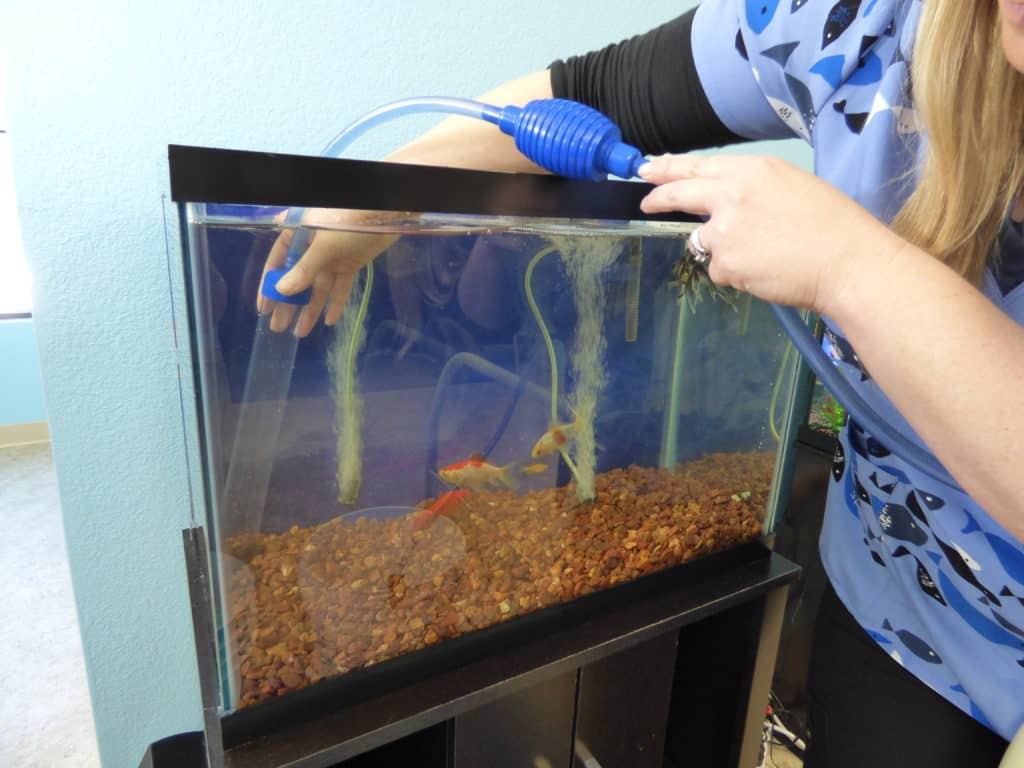What is Old Tank Syndrome?
This occurs in fish tanks and ponds with the following water quality parameters:
pH: <6.0
Alkalinity (kH): <50 mg/L, usually 0 mg/L
Ammonia: >1.5 mg/L
Nitrite: >0 mg/L
Nitrate: >40 mg/L
The loss of buffers (alkalinity) can lead to pH swings and a pH crash. The low pH actually protects your fish from the high nitrogen levels. This syndrome usually leads to intermittent deaths or wide-spread death and disease.
How does Old Tank Syndrome happen?
This syndrome occurs in established systems with little to no proper maintenance. Perhaps it has gone for too long without a water change or the filtration is clogged up and inoperable. As the nitrate levels rise, the bacteria responsible for the conversion of nitrite to nitrate get backed up, leading to a rise in nitrite levels. These processes can back up even further and cause the ammonia to skyrocket.
Meanwhile, the buffers in your water are slowly used up, and then the pH starts to sink. This can occur very slowly or very rapidly, depending on how large your system is and how many fish are in it. Once your kH reaches close to 0, your pH can swing up and down with your fishes’ biological functions. pH crashes are very commonly tied to Old Tank/Pond Syndrome.
In the end, you end up with a very low pH, no buffers, high ammonia, nitrite and nitrate.
How do I know if this is occurring in my pond/tank?
The physical signs of Old Tank/Pond Syndrome are very minimal and vague. You may see increased parasitism and other disease. You may get a few intermittent deaths or all your fish may die. You may have no signs whatsoever that this is occurring in your system. There are no concrete physical signs that point to this syndrome.
The only way to tell if this is happening in your system is to test your water quality parameters. Bring a sample to your local fish store, buy a test kit, or have your fish veterinarian or pond professional check your pond out to determine what your levels are at. It is a very straightforward diagnosis.
I have diagnosed Old Tank Syndrome in my system. What do I do?
You may feel like a full water change will be the best, but DON’T DO IT! Slow and steady return to normal water quality is the main target of therapy for this syndrome.
Start with very small (10-15%) water changes daily for 1 week. The second week, stretch it out to every other day. Make sure your filtration is functioning properly! If you are not sure, get the opinion of an aquarium or pond professional. Don’t attempt any major filtration changes if you are inexperienced.
Weeks 3 and 4, do larger water changes (20-25%) twice a week. At the end of 4 weeks, check your water quality and see what has changed from day 0. You may need to upgrade your filtration system or start cleaning more routinely to bring your water change amount and/or frequency back down.
I have additional questions. Who should I contact?
We recommend that you contact your local aquarium or pond professional, fish veterinarian or pet fish store for help with this syndrome. Having a fish veterinarian for emergencies is never a bad idea. Find one in your area using either of the following databases:
World Aquatic Veterinary Medical Association (international): https://wavma.org
American Association of Fish Veterinarians (US only): https://www.fishvets.org
We at Aquatic Veterinary Services can always help over the phone or email. Our phone is (831) 278-1081 and we have email contact forms available online at https://cafishvet.com/appointment/


Pingback: Fish X-Rays – Aquatic Veterinary Services
Pingback: Top 5 Most Common Problems with Koi Ponds – Aquatic Veterinary Services